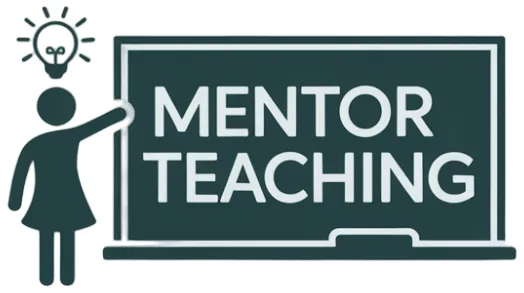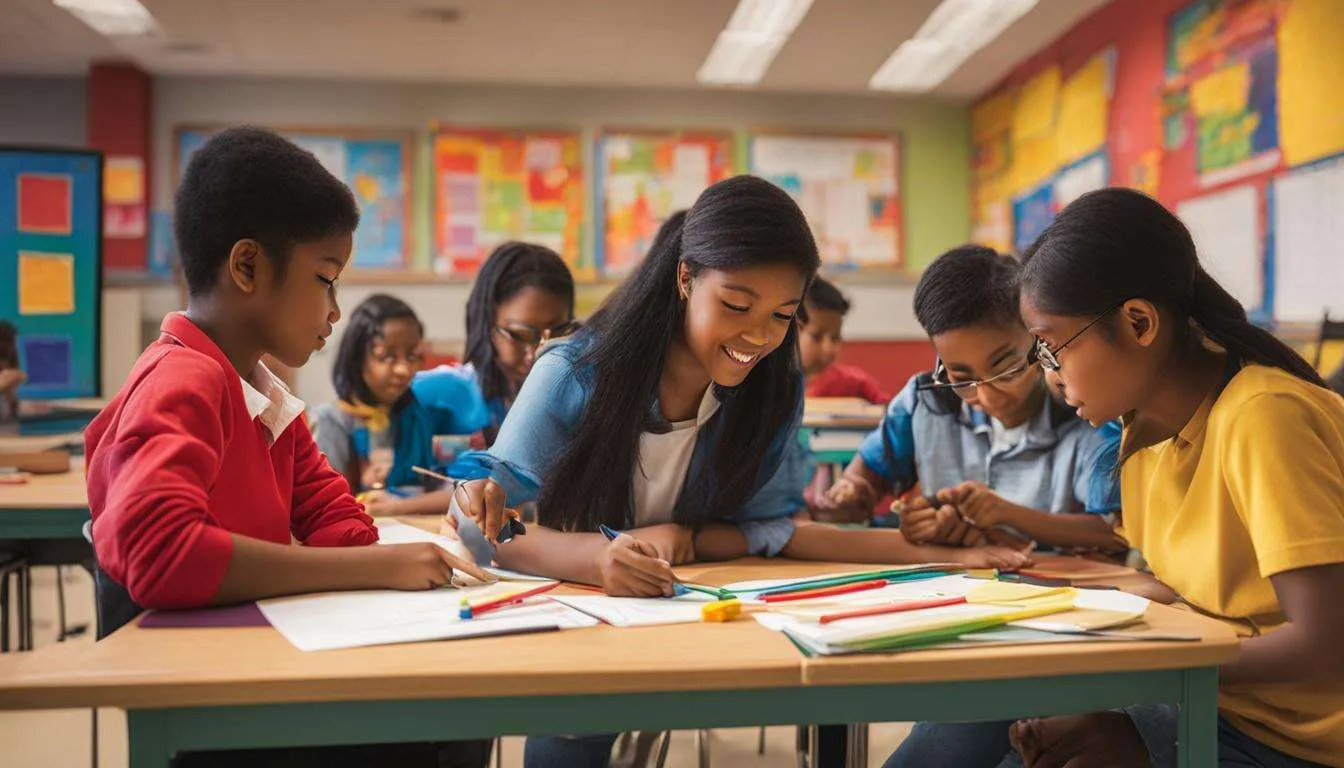Effective teaching requires careful planning and the right tools. One of the most useful tools for teachers is instructional strategies. These techniques can improve a lesson, making it more engaging and memorable. This post will explore 15 key instructional strategies to enhance your lesson plans and help your students reach their potential.
What Are Instructional Strategies?
Instructional strategies are methods teachers use to help students learn and understand course material. They do more than just present information; they create an active, engaging learning environment. These strategies aim to develop independent, strategic learners who can think critically and apply their knowledge to real situations.
Why Are Instructional Strategies Important?
Before we examine specific strategies, let’s consider their importance:
- They increase engagement: Various strategies keep students interested and motivated.
- They promote deeper understanding: Active learning techniques improve retention and comprehension.
- They cater to diverse learners: Different strategies suit various learning styles.
- They develop skills: Many strategies build critical thinking and problem-solving abilities.
- They apply to real-world situations: Effective strategies link classroom learning to practical scenarios.
15 Key Instructional Strategies
1. Think-Pair-Share
This simple yet effective strategy encourages participation and critical thinking. Here’s how it works:
- Think: Students individually consider a question or problem.
- Pair: They discuss their thoughts with a partner.
- Share: Pairs share their ideas with the larger group.
This approach gives students time to form their ideas and practice expressing them before speaking to the whole class.
2. Jigsaw Classroom
The jigsaw technique promotes cooperative learning:
- Divide students into groups.
- Assign each group member a different part of the material to learn.
- Regroup students so that each new group has one expert on each part.
- Have students teach their part to their new group.
This strategy encourages active listening and peer teaching, reinforcing learning for all students.
3. Flipped Classroom
In a flipped classroom:
- Students learn new content at home through videos or readings.
- Class time is used for discussions, projects, and problem-solving.
This approach maximizes in-class time for active learning and allows students to learn at their own pace.
4. Case Studies
Case studies bring real scenarios into the classroom:
- Present students with a complex real-life situation.
- Have them analyze the problem and propose solutions.
- Discuss different approaches and their potential outcomes.
This strategy develops critical thinking and problem-solving skills while showing the practical applications of course material.
5. Exit Tickets
Exit tickets are a quick assessment tool:
- At the end of class, give students a brief task or question.
- Have them complete it before leaving.
- Use the responses to gauge understanding and plan future lessons.
This strategy provides immediate feedback on student comprehension and helps tailor instruction to student needs.
6. Graphic Organizers
Visual aids like concept maps, flowcharts, and Venn diagrams help students:
- Organize information
- See relationships between ideas
- Summarize key points
Graphic organizers are particularly helpful for visual learners and can make complex information more accessible.
7. Role Play
Role-playing activities allow students to:
- Step into different perspectives
- Apply knowledge in simulated real-world situations
- Develop empathy and understanding
This strategy is particularly effective for teaching social skills, history, and literature.
8. Reciprocal Teaching
In reciprocal teaching:
- Students take turns leading small group discussions.
- The student leader summarizes, asks questions, clarifies, and predicts.
- The teacher gradually releases control to the students.
This approach develops comprehension skills and promotes student autonomy.
9. Socratic Seminar
A Socratic seminar involves:
- Posing open-ended questions about a text or topic
- Encouraging students to engage in thoughtful dialogue
- Promoting critical thinking and respectful debate
This strategy develops analytical skills and helps students articulate their ideas clearly.
10. Gallery Walk
In a gallery walk:
- Post different problems or questions around the room.
- Have students move from station to station in small groups.
- Encourage them to discuss and respond to each prompt.
This strategy promotes movement, collaboration, and exposure to multiple perspectives.
11. Think Aloud
When using the think aloud strategy:
- The teacher verbalizes their thought process while solving a problem or analyzing a text.
- Students gain insight into expert thinking strategies.
- Students practice metacognition by reflecting on their own thought processes.
This approach models critical thinking and problem-solving skills for students.
12. Peer Instruction
Peer instruction involves:
- Presenting students with a conceptual question
- Having them answer individually
- Discussing their answers with peers
- Revoting on the question
This strategy promotes active learning and allows students to learn from each other.
13. Scaffolded Instruction
Scaffolding involves:
- Breaking complex tasks into manageable steps
- Providing support that gradually decreases as students gain proficiency
- Tailoring instruction to individual student needs
This approach helps students build confidence and mastery over time.
14. Project-Based Learning
Project-based learning (PBL) involves:
- Presenting students with a complex real-world problem or question
- Having them work collaboratively to investigate and solve it
- Creating a final product or presentation
PBL promotes deep learning, creativity, and the application of knowledge across disciplines.
15. Gamification
Gamification involves applying game-design elements to learning activities:
- Use points, badges, or leaderboards to motivate students.
- Create challenges or quests related to course content.
- Incorporate storytelling elements to engage students.
This strategy can increase motivation and make learning more enjoyable.
Implementing Instructional Strategies in Your Lesson Plans
To effectively use these strategies:
- Align them with your learning objectives.
- Consider your students’ needs and learning styles.
- Mix and match strategies to keep lessons varied and engaging.
- Reflect on their effectiveness and adjust as needed.
Remember, the best strategy is the one that helps your students learn most effectively. Don’t hesitate to experiment and find what works best for your classroom.
Choosing the Right Strategies
When selecting instructional strategies for your lesson plans, consider:
- The subject matter and content
- Your students’ age and abilities
- Available resources and time constraints
- Your teaching style and strengths
It’s beneficial to have a diverse set of strategies to draw from, as different topics and learning objectives may require different approaches.
Assessing the Effectiveness of Your Strategies
To ensure your chosen strategies are working:
- Regularly collect student feedback
- Monitor student performance and engagement
- Reflect on your own observations and experiences
- Be open to adjusting your approach based on what you learn
Remember that what works for one group of students may not work for another, so ongoing assessment and adaptation are key.
Incorporating Technology
Many of these strategies can be improved with technology:
- Use online collaboration tools for group projects
- Implement digital exit tickets for quick assessments
- Create interactive graphic organizers with software like Lucidchart or Mindmeister
- Use educational games and apps for gamification
Technology can make these strategies more engaging and easier to implement, especially in remote or hybrid learning environments.
Professional Development and Continuous Learning
To expand your range of instructional strategies:
- Attend workshops and conferences
- Participate in online courses or webinars
- Join professional learning communities
- Read educational journals and blogs
- Collaborate with colleagues to share ideas and experiences
Staying current with educational research and best practices will help you continually refine and improve your teaching strategies.
Empowering Your Teaching
Instructional strategies are valuable tools that can improve your teaching and your students’ learning experiences. By incorporating these 15 key strategies into your lesson plans, you’ll create a more dynamic, engaging classroom environment that promotes deep learning and critical thinking.
As you implement these strategies, pay attention to your students’ responses and be willing to adapt. The most effective teachers are those who continually refine their approach based on their students’ needs and feedback.
Remember, great teaching is not just about what you teach, but how you teach it. With these instructional strategies in your toolkit, you’re well-prepared to inspire, engage, and empower your students to reach their potential.
By thoughtfully incorporating these strategies into your lesson plans, you can create a rich, interactive learning environment that not only imparts knowledge but also develops critical thinking skills, encourages collaboration, and prepares students for real-world challenges. The key is to remain flexible, responsive to your students’ needs, and always open to learning and improving your own teaching practice.




